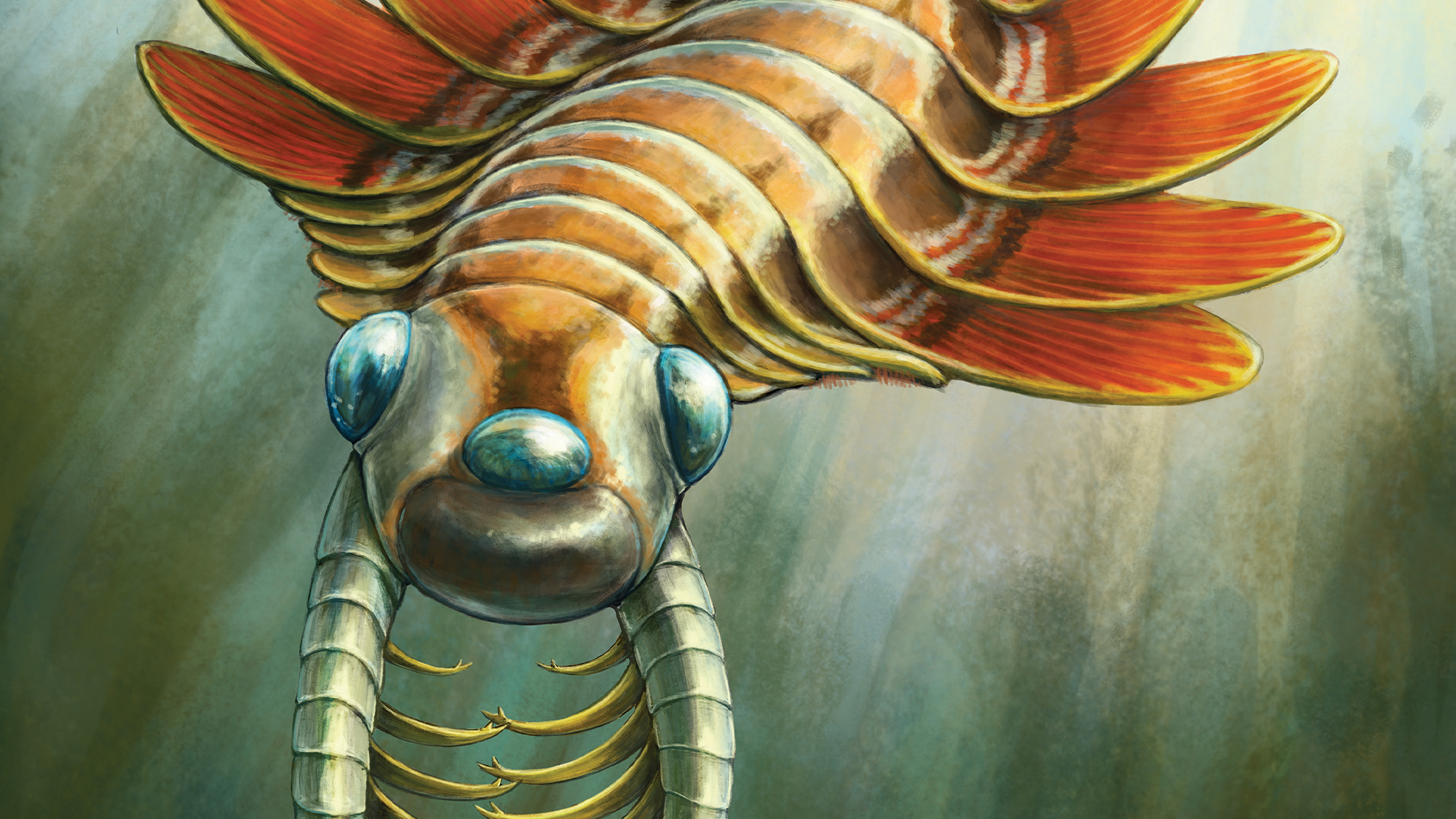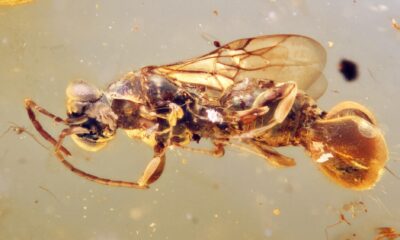Gadgets
Ancient three-eyed ‘sea moth’ used its butt to breathe

Despite centuries of digging, paleontologists are still unearthing new flora and fauna preserved for millennia in rocks. Case in point, the newly discovered Mosura fentoni. This 506-million-year-old predator was found in Canada’s Burgess Shale and packed a punch for something only about the size of a human index finger. The findings are detailed in a study published May 13 in the journal Royal Society Open Science.
Meet Mosura
From the fossils, paleontologists believe that Mosura fentoni had three eyes, spiny jointed claws, a circular mouth lined with teeth, and a body equipped with swimming flaps along its sides. It was likely part of an extinct group of small early arthropods called radiodonts. The three-feet-long predator Anomalocaris canadensis was also a radiodont that shared the water with Mosura.
However, Mosura has something that has not been seen in other radiodont. It has an abdomen-like body region made up of several segments at its back–similar to living insects and other arthropods.
“Mosura has 16 tightly packed segments lined with gills at the rear end of its body,” Joe Moysiuk, a study co-author and Curator of Palaeontology and Geology at the Manitoba Museum, said in a statement. “This is a neat example of evolutionary convergence with modern groups, like horseshoe crabs, woodlice, and insects, which share a batch of segments bearing respiratory organs at the rear of the body.”
The team is not sure why Mosura has this intriguing adaptation, but it could be related to particular habitat preference or behavioral characteristics that required more efficient respiration.
The sea moth
Field collectors nicknamed Mosura the “sea-moth” due to the board swimming flaps located near its midsection and narrow abdomen. The moth-like feature inspired its scientific name, which references the fictional Japanese kaiju also known as Mothra. However, it is only distantly related to real moths. Mosura sits on a much deeper branch in the arthropod evolutionary tree.
“Radiodonts were the first group of arthropods to branch out in the evolutionary tree, so they provide key insight into ancestral traits for the entire group,” Jean-Bernard Caron, a study coauthor and Curator of Invertebrate Palaeontology at the Royal Ontario Museum, said in a statement. “The new species emphasizes that these early arthropods were already surprisingly diverse and were adapting in a comparable way to their distant modern relatives.”

Additionally, several Mosura fossils show details of internal anatomy seen in later arthropods, including some elements of the nervous system, circulatory system, and digestive tract.
“Very few fossil sites in the world offer this level of insight into soft internal anatomy. We can see traces representing bundles of nerves in the eyes that would have been involved in image processing, just like in living arthropods. The details are astounding,” said Caron.
[ Related: This tiny, 8-foot long whale swam off Egypt’s coast 41 million years ago. ]
Open blood
Instead of having internal arteries and veins to transfer blood the way that most living mammals do, Mosura had an open circulatory system. Its heart pumped blood into large internal body cavities called lacunae. In some of the fossils, the lacunae are preserved as reflective patches that fill the body and extend into the swimming flaps.
“The well-preserved lacunae of the circulatory system in Mosura help us to interpret similar, but less clear features that we’ve seen before in other fossils. Their identity has been controversial,” said Moysiuk. “It turns out that preservation of these structures is widespread, confirming the ancient origin of this type of circulatory system.”

All but one of the 61 Mosura fossils in this study were collected by the Royal Ontario Museum between 1975 and 2022, highlighting the importance of these types of animal archives.
“Museum collections, old and new, are a bottomless treasure trove of information about the past. Moysiuk suggested, “If you think you’ve seen it all before, you just need to open up a museum drawer.”
The PopSci team has extensively tested numerous products and dedicated countless hours to find the best gear and gadgets available for purchase.
Laura, Popular Science’s news editor, has a keen interest in aquatic life, paleontology, nanotechnology, and the impact of science on daily life.
-

 Destination8 months ago
Destination8 months agoSingapore Airlines CEO set to join board of Air India, BA News, BA
-

 Breaking News9 months ago
Breaking News9 months agoCroatia to reintroduce compulsory military draft as regional tensions soar
-

 Tech News11 months ago
Tech News11 months agoBangladeshi police agents accused of selling citizens’ personal information on Telegram
-

 Productivity11 months ago
Productivity11 months agoHow Your Contact Center Can Become A Customer Engagement Center
-

 Breaking News9 months ago
Breaking News9 months agoBangladesh crisis: Refaat Ahmed sworn in as Bangladesh’s new chief justice
-

 Toys11 months ago
Toys11 months ago15 of the Best Trike & Tricycles Mums Recommend
-

 Gadgets3 months ago
Gadgets3 months agoSupernatural Season 16 Revival News, Cast, Plot and Release Date
-

 Guides & Tips10 months ago
Guides & Tips10 months agoHave Unlimited Korean Food at MANY Unlimited Topokki!
























